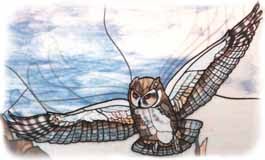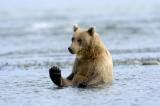Book 1: The Warded ManWhen I read
Peter V. Brett's first published novel,
The Warded Man, I found it extremely difficult to put down. The premise of the underlying world was straightforward enough, but the character development, action and story line were exciting and compelling. I stayed up far past my bedtime to finish it.
Book 2: The Desert Spear
The next book in the series,
The Desert Spear, will be released on April 13. I used my sci-fi/fantasy geek powers to get my hands on an ARC (Advanced Reader Copy), so I finished the book a couple weeks ago. I'd like to write a full glowing review of it but there are no such reviews online at the moment; I don't want to pre-empt whatever marketing strategy the publisher and author would like to employ as the book ramps up to its release date.
I'll say a little, though. I had very high expectations for this sequel. In the course of reading The Desert Spear, my expectations were met - and surpassed quite thoroughly. I would love to get into specifics. Like the first book, I was glued to the page far past my bedtime until I finished it. In some fantasy series, subsequent novels seem to contain filler material to fluff up the latest installment into a full length book. But none of that here! The Desert Spear has a wonderful pace and that rare "unputdownability" that I love in a good book. Great sequel!
Project Idea: WandererIn the very long term, I'd love to make a glass plating project based on this series of books. A combination of a few existing images might be interesting. The landscape would be a cropped version of
this valley, illuminated by the setting sun. The structure on the far mountain would be changed to old ruins. The sky would meed to be more colorful, and the dark areas would be dark blues, purples, and greens rather than black.
The rider's profile would be
along these lines, placed in the foreground and perhaps to the right. I'm thinking the upper half of the horse and rider would be struck by a ray of sunlight. The horse would also need some kind of
metallic barding. Finally, I would need wisps of mist rising from the ground on the plain, perhaps shrouding a murky figure with red eyes. I still haven't designed a project from scratch, let alone done glass plating. At this point, I still have no idea what I'm talking about. I do have a suspicion this would be very hard to make. ;)






















